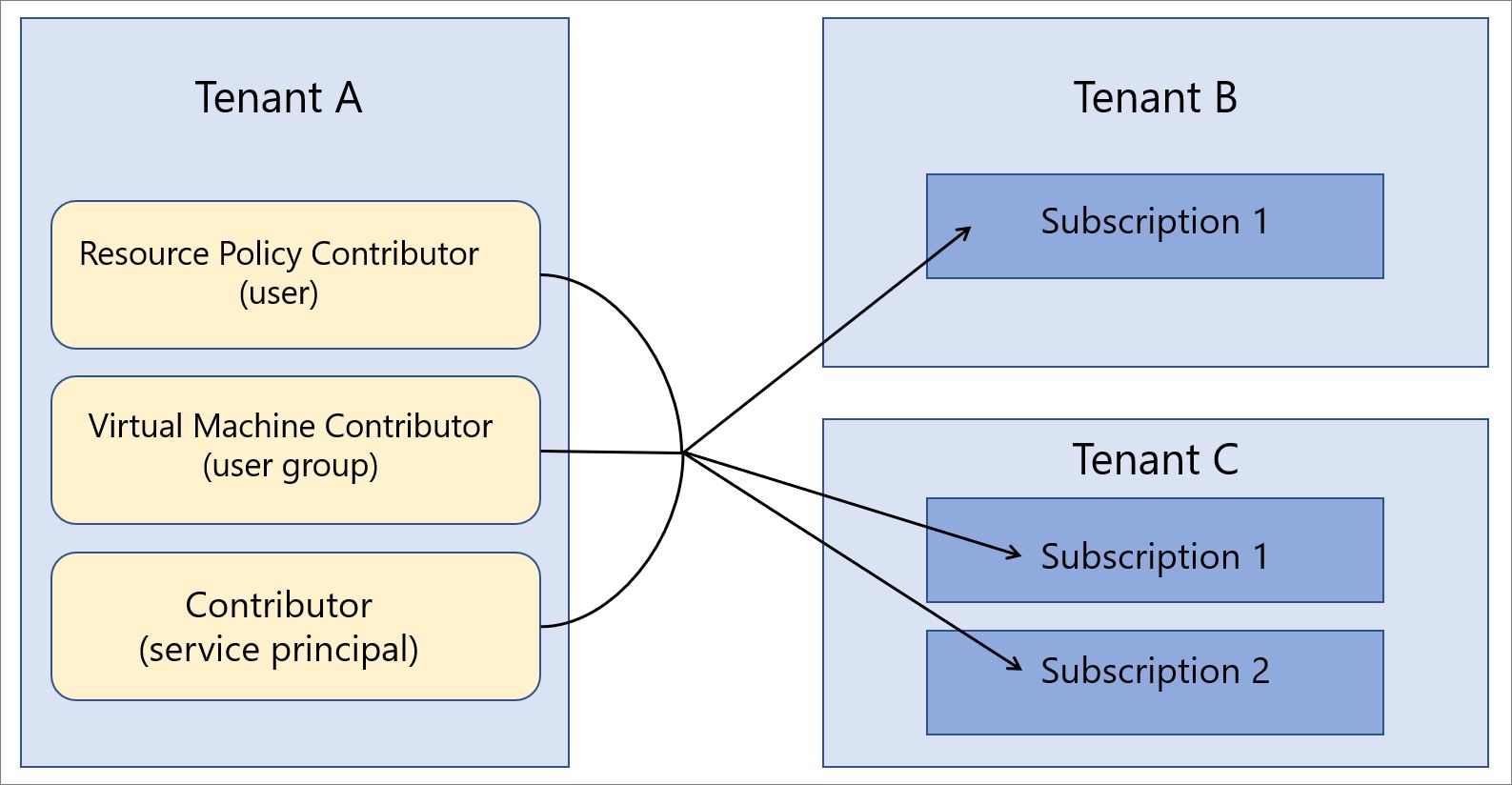Centralize management operations
For most organizations, using a single Microsoft Entra tenant for all users simplifies management operations and reduces maintenance costs. This is because all management tasks can be by designated users, user groups, or service principals within that tenant.
We recommend that you use only one Microsoft Entra tenant for your organization, if possible. However, some situations might require an organization to maintain multiple Microsoft Entra tenants for the following reasons:
- They are wholly independent subsidiaries.
- They're operating independently in multiple geographies.
- Certain legal or compliance requirements apply.
- There are acquisitions of other organizations (sometimes temporary until a long-term tenant consolidation strategy is defined).
When a multiple-tenant architecture is required, Azure Lighthouse provides a way to centralize and streamline management operations. Subscriptions from multiple tenants can be onboarded for Azure delegated resource management. This option allows specified users in the managing tenant to perform cross-tenant management functions in a centralized and scalable manner.
For example, let's say your organization has a single tenant, Tenant A. The organization then acquires two additional tenants, Tenant B and Tenant C, and you have business reasons that require you to maintain them as separate tenants.
Your organization wants to use the same policy definitions, backup practices, and security processes across all tenants. Because you already have users (including user groups and service principals) that are responsible for performing these tasks within Tenant A, you can onboard all of the subscriptions within Tenant B and Tenant C so that those same users in Tenant A can perform those tasks. Tenant A then becomes the managing tenant for Tenant B and Tenant C.

For more information, see Azure Lighthouse in enterprise scenarios.